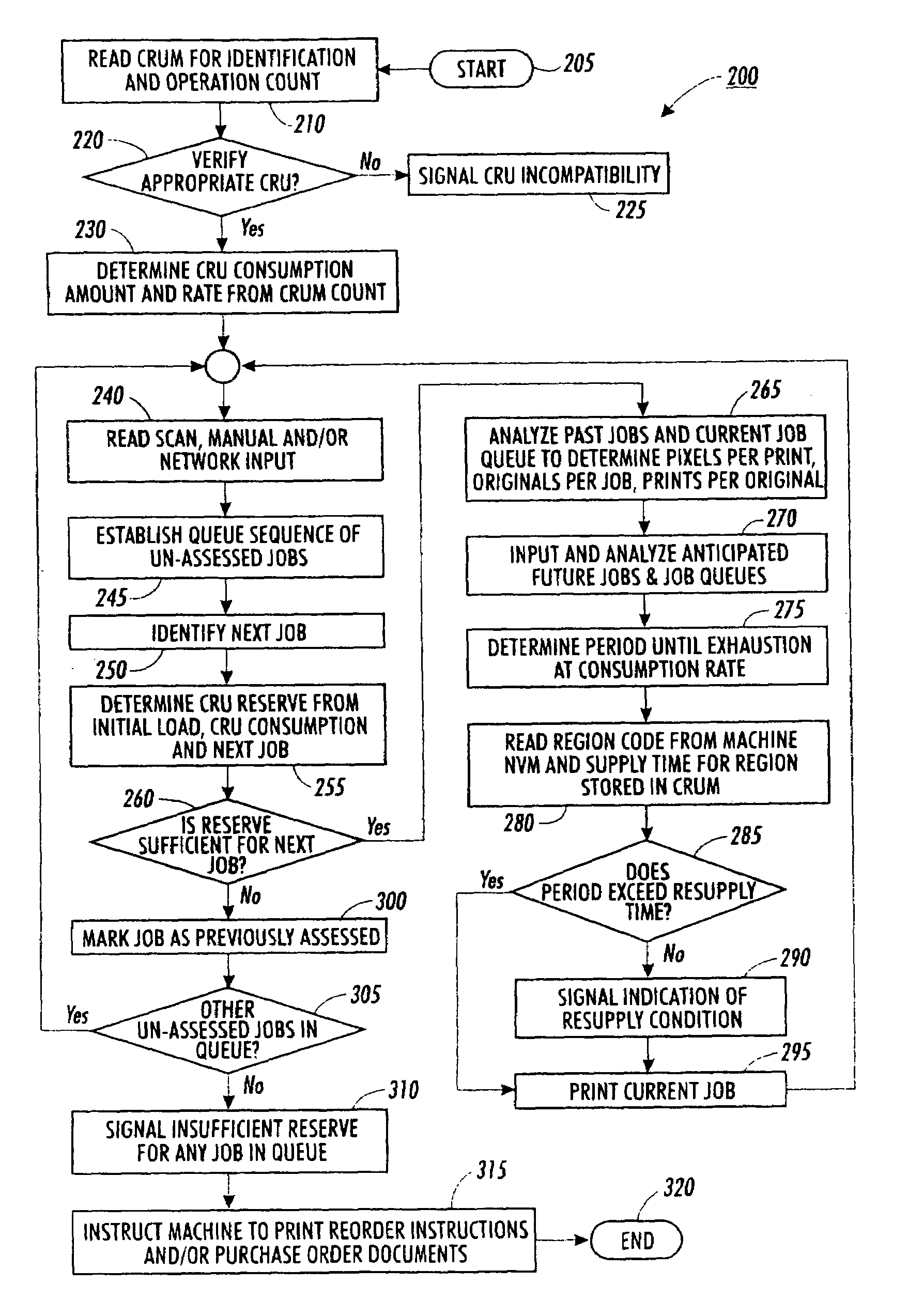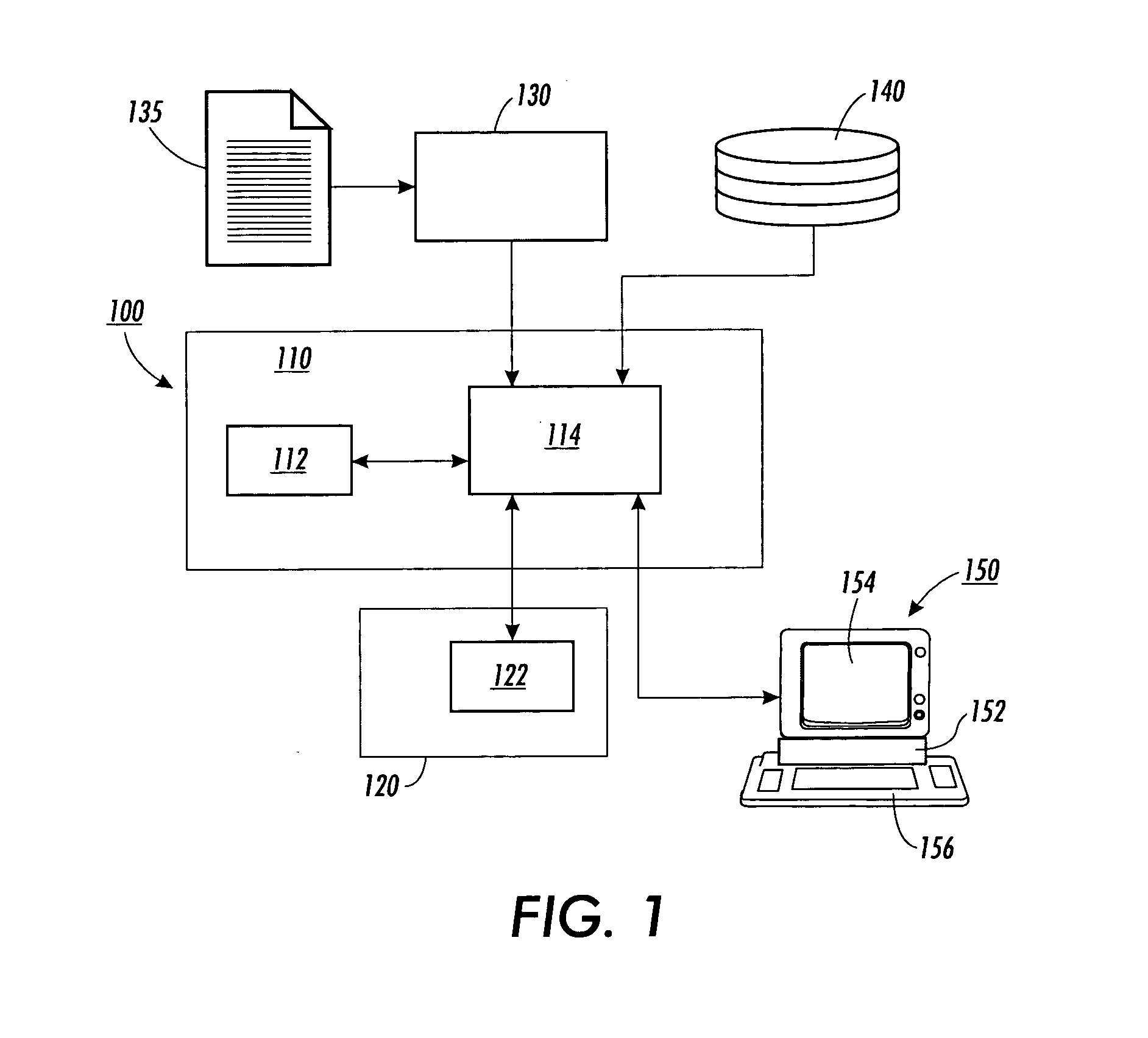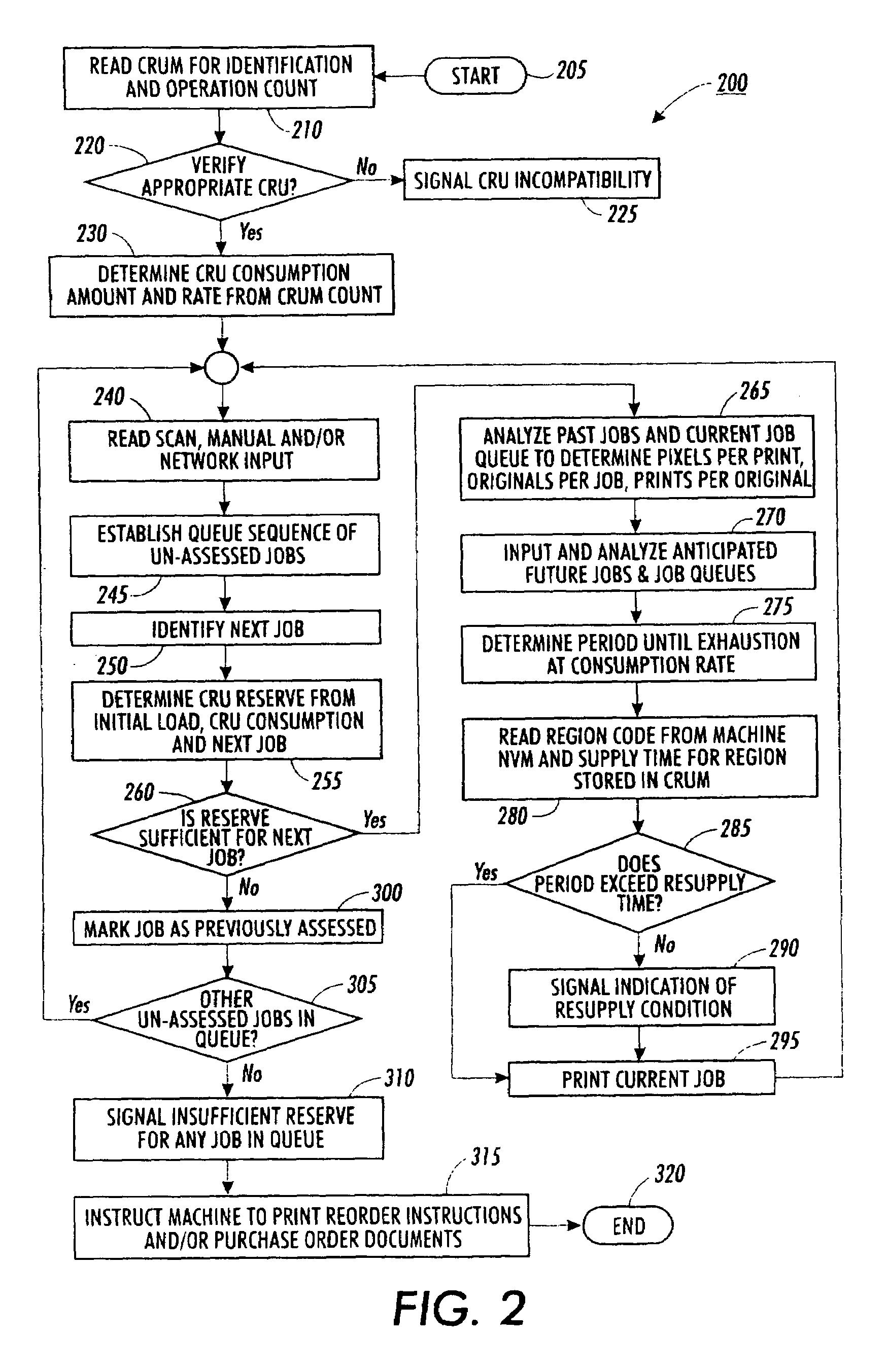Systems and methods for end-of-life prediction
a technology of end-of-life prediction and system, applied in the field of prediction, can solve the problems of insufficient information for the microprocessor to optimize, and achieve the effect of avoiding machine downtim
- Summary
- Abstract
- Description
- Claims
- Application Information
AI Technical Summary
Benefits of technology
Problems solved by technology
Method used
Image
Examples
Embodiment Construction
[0017]The following detailed description refers to a replaceable cartridge, for example, in a document processing system. The replaceable cartridge, may refer to, for example, an ink reservoir CRU and a photoreceptor drum CRU, etc., for sake of clarity and familiarity. However, it should be appreciated that the principles described herein, can be equally applied to any known or later-developed replaceable cartridges, beyond the CRUs specifically discussed herein.
[0018]For example, data independent of the replaceable cartridge, such as, from a scanned image, or other document reproduction input, including information from past or anticipated future jobs, can be used to augment prediction of when CRU refurbishment may be necessary. An algorithm can be used to determine future demand on the CRU prior to execution of the job, thereby alerting the user that rescheduling of pending jobs and / or reorder of supplies may soon be required.
[0019]FIG. 1 shows an exemplary block diagram of the sy...
PUM
 Login to View More
Login to View More Abstract
Description
Claims
Application Information
 Login to View More
Login to View More - R&D
- Intellectual Property
- Life Sciences
- Materials
- Tech Scout
- Unparalleled Data Quality
- Higher Quality Content
- 60% Fewer Hallucinations
Browse by: Latest US Patents, China's latest patents, Technical Efficacy Thesaurus, Application Domain, Technology Topic, Popular Technical Reports.
© 2025 PatSnap. All rights reserved.Legal|Privacy policy|Modern Slavery Act Transparency Statement|Sitemap|About US| Contact US: help@patsnap.com



